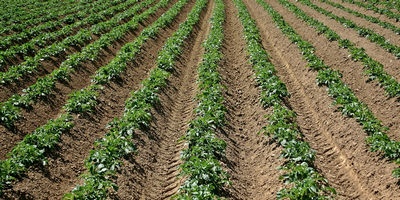|
 Vegetable crops require a lot of light, heat, moisture and fertile soil. Vegetable crops require a lot of light, heat, moisture and fertile soil.
Selecting a site for vegetable crops
The area allocated for vegetables should be:
- flat with a low relief, with a groundwater table not higher than 80-60 cm (it is good to choose a site with a slight slope to the south);
- protected from the prevailing winds;
- with good accessibility for the delivery of organic fertilizers and product removal;
- be near water sources and stocks of organic fertilizers;
- soils should be with a deep arable layer and a permeable subsoil; first of all, it is necessary to allocate areas of old arable, well-filled, places of former dumps and young deposits.
Shallow, weakly podzolic, sandy loam and loam, with a thin arable layer, as well as areas that have just emerged from uprooting, cannot be taken away.
For vegetable crops, except cucumbers, can be used peat-boggy soils (lowland origin) after appropriate drying.
Crop rotation
To increase the yield of vegetable crops, the correct vegetable crop rotation must be introduced in every farm that has sowed vegetables.
The introduction of the correct crop rotation should ensure the implementation of the entire complex of agrotechnical measures, high yield of vegetables, full placement of planning targets for sowing, productive use of labor and draft power and means of production.
When choosing crop rotation schemes, it is necessary to take into account the characteristics of each individual farm - the nature of the soil, the relief of the site, location, etc., without allowing a mechanical approach to the choice of crop rotation schemes. For small sowing areas, vegetables should be placed in household and near-farm crop rotations.
Tillage
 a) Autumn tillage after harvesting early crops should begin with peeling the field to a depth of 5–6 cm, and 20–25 days after plowing, the site is plowed under autumn plow to a depth of 20–25 cm. a) Autumn tillage after harvesting early crops should begin with peeling the field to a depth of 5–6 cm, and 20–25 days after plowing, the site is plowed under autumn plow to a depth of 20–25 cm.
After late crops, plowing is carried out immediately after harvesting, or even together with harvesting as the area is cleared from under the crop. On soils with a shallow humus layer, it is necessary to deepen the arable layer annually during autumn plowing by 1-2 cm, while additionally 40-60 tons of manure per hectare is introduced. In areas contaminated with wheatgrass, the first autumn stubble cultivation should be carried out to a depth of 10 cm (the depth of the main mass of rhizomes). Hulling is carried out with a stubble plow or a wheat plow to a depth of 10 cm. After that, autumn plowing is immediately carried out to a depth of 22-25 cm. With this treatment, all wheatgrass rhizomes die.
b) Spring tillage for vegetable crops (onions, root crops, early cabbage, etc.) consists in harrowing in 2-3 tracks, which is done at the first opportunity to leave the field. After harrowing, cultivation should be carried out to a depth of 8-10 cm.
If the soil surface is well leveled, you can limit yourself to one cultivation. On contaminated areas and on compacted soils, fall plowing is carried out to 3/4 of the depth of the autumn plowing layer, followed by cutting the surface with harrows in 2-3 tracks.
I. Osipov - Agroindication
|
 Vegetable crops require a lot of light, heat, moisture and fertile soil.
Vegetable crops require a lot of light, heat, moisture and fertile soil. a) Autumn tillage after harvesting early crops should begin with peeling the field to a depth of 5–6 cm, and 20–25 days after plowing, the site is plowed under autumn plow to a depth of 20–25 cm.
a) Autumn tillage after harvesting early crops should begin with peeling the field to a depth of 5–6 cm, and 20–25 days after plowing, the site is plowed under autumn plow to a depth of 20–25 cm.









